Overview
Dukemon is a desktop flashcard application used to reinforce memory techniques. The user interacts with it using a CLI, and it has a GUI created with JavaFX. It is written in Java, and has about 25 kLoC.
Summary of contributions
-
Major enhancement:
-
added Game Result page after game ends
-
What it does: It shows the user a page to indicate the game is over, which contains the user’s performance on the current game (score, time taken), the user’s progress (progress chart, achievement badges, high score, fastest clear), and a list of words the user has missed to help improve the user’s subsequent performance.
-
Justification: It helps game-ify the process of learning, gives the user a chance to look at how to improve their performance, and also gives a sense of accomplishment for being able to see the progress made after a game session finished.
-
Highlights: The usage of time as a metric of performance (time taken, fastest clear) required understanding on the code for the timer, which led to in-depth discussion with a group mate (Koh Yida).
-
-
added Statistics for each word bank
-
What it does: It shows the user a page on the summary of the statistics of a word bank (can be seen in open mode). It contains the user’s progress (progress chart, achievement badges, high score, fastest clear) and a list of 5 words which the user gets wrong most often.
-
Justification: It gives the user a way to see their progress on a specific word bank, and shows user which words the user is weak at.
-
-
added Global Statistics of overall usage
-
What it does: It shows the user a page on the main page of their overall usage of the app. It contains the user’s total games played, weekly games count, and most played word bank.
-
Justification: By showing the global statistics right on the home page, it makes the app feel more personalized. Additionally, showing the total games played and weekly games count may increase user’s app usage, as each game is recorded and it feels like the user is making their own footprint on the app.
-
-
-
Code contributed: Link to codebase
-
Other contributions:
-
Refactored the models of AB3 (Person, AddressBook, and their closely-connected classes) to correctly fit the app (Card, WordBank, etc) in the very early stage of the project, which leads to increased productivity from the other members, as it was one of the biggest bottleneck of the project’s progress.
-
Sourced for and integrated the avatars for Dukemon that provide a more fun and flavorful learning experience [credit to Geovanny Gavilanes].
-
Created the logo for the app.
-
Contributions to the User Guide
Given below are sections I contributed to the User Guide. They showcase my ability to write documentation targeting end-users. |
WordBank Statistics Commands 
(Available in Open mode)
Resetting the WordBank statistics: reset
Resets the statistics of the open WordBank to an empty statistics.
Format: reset
Statistics
This section covers the Statistics shown to the user.
Game Result
The game result is shown to the user every time a Game finishes. It contains information regarding the finished Game session and Statistics for the selected WordBank.
We use a simple formula to calculate the score: floor of (Number of correct answers) / (Total questions) * 100.
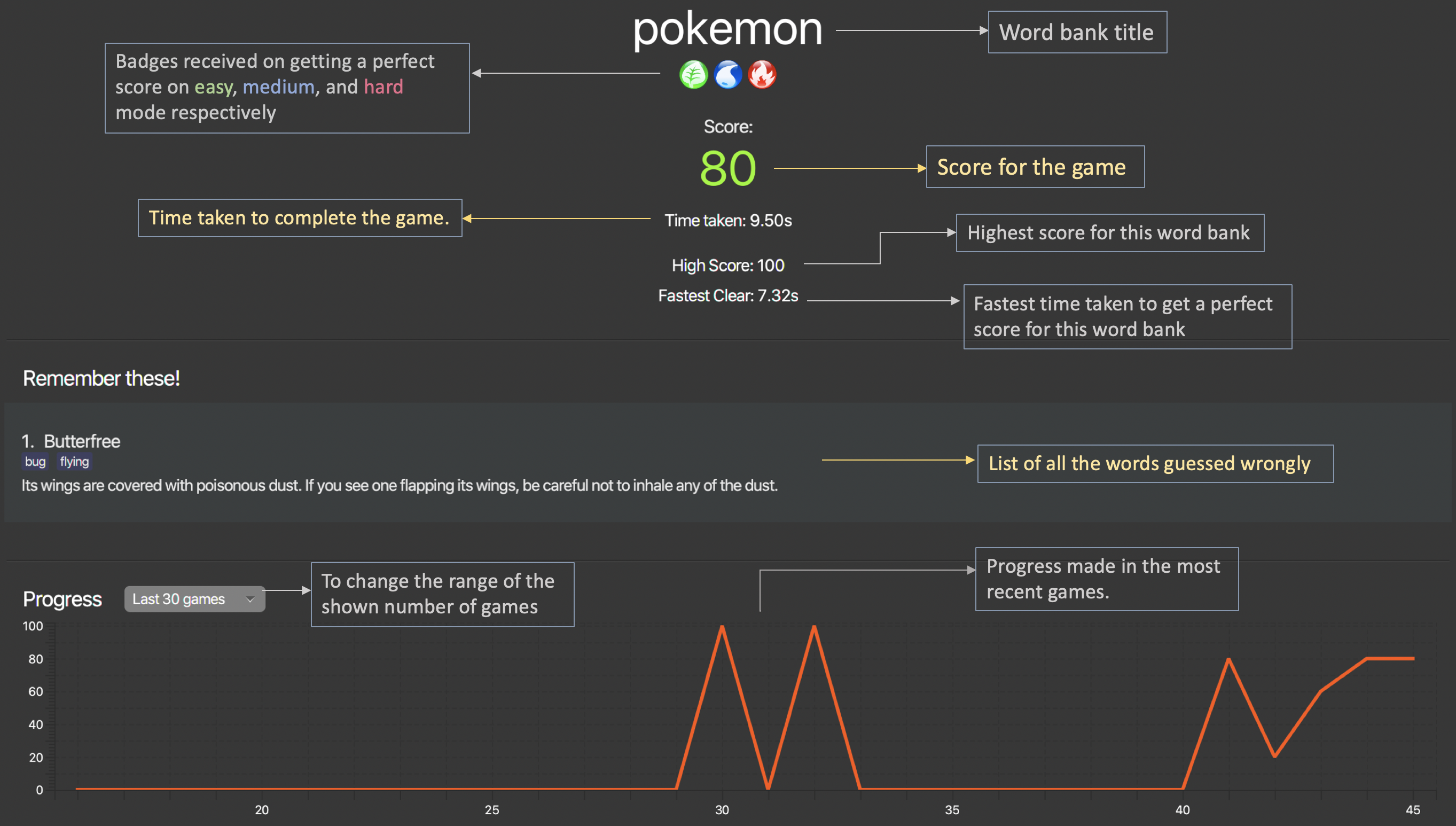
WordBank Statistics
The WordBank statistics is shown in the Open mode and contains all information regarding the selected WordBank.

| The high score and fastest clear timing of a WordBank will not be reset upon adding/deleting cards. |
Global Statistics
The global statistics is shown on the main title page and contains all information regarding the user’s overall usage of the app.

Contributions to the Developer Guide
Given below are sections I contributed to the Developer Guide. They showcase my ability to write technical documentation and the technical depth of my contributions to the project. |
Statistics component
The Statistics component includes 2 main subcomponents:
-
A
GlobalStatistics, containing the user’s total number of games played and the number of games played in the current week. -
A
WordBankStatisticsList, which is a collection ofWordBankStatistics, one for eachWordBank.
The class diagram of the Statistics component is shown below:
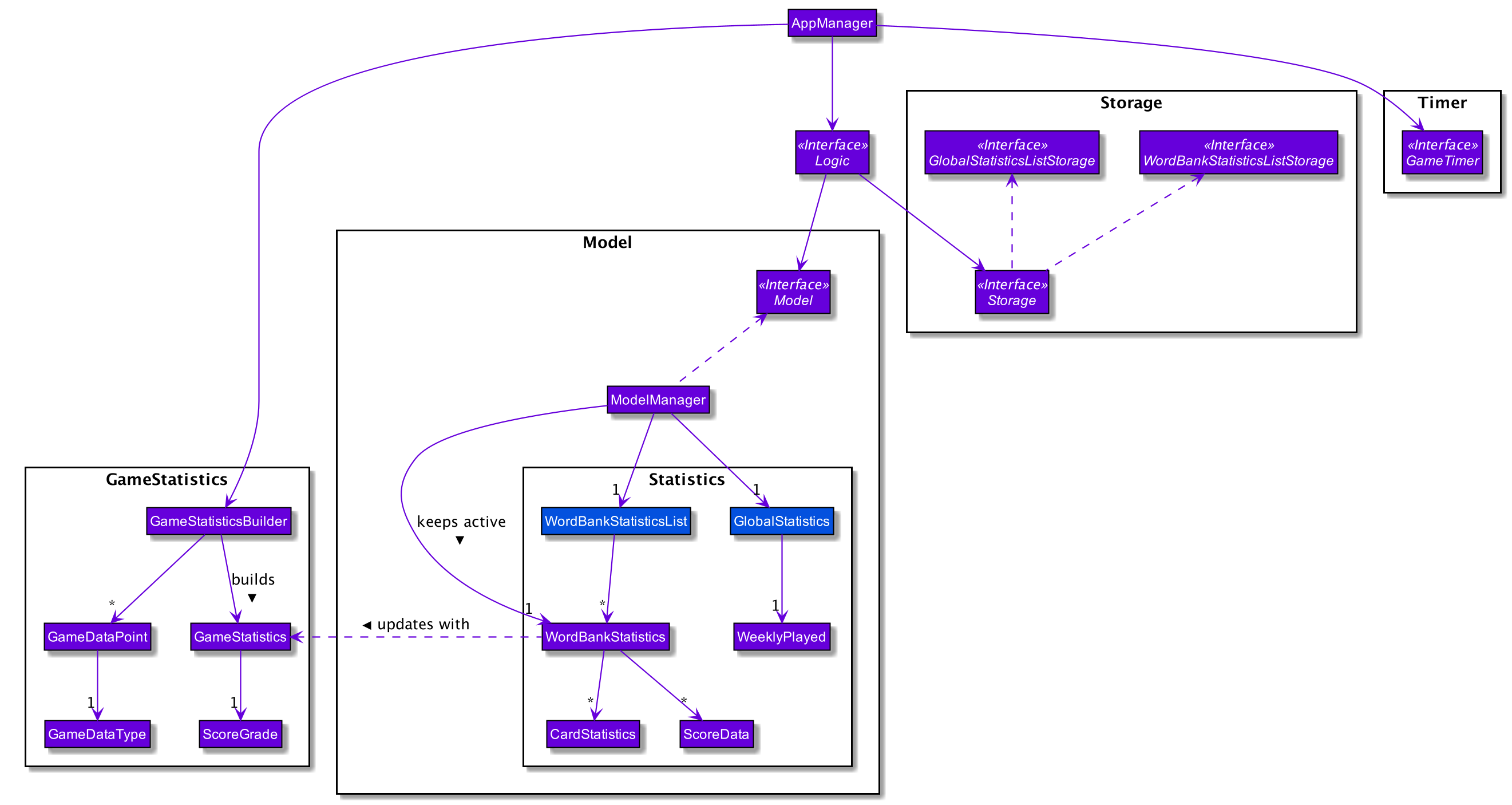
Statistics Feature
Implementation
The work of the Statistics component can be neatly captured and explained using a common series of user actions when operating the app.
| User action | Statistics work | UI Statistics updates |
|---|---|---|
User opens the app. |
User’s |
User is shown their |
User selects a word bank. |
The selected |
|
User opens the selected word bank. |
In open mode, User is shown the |
|
User plays the game. |
A |
|
User finishes the game. |
|
|
We will discuss each step with its implementation details primarily on the statistics work.
1. User opens the app
When the user opens the app, their GlobalStatistics and WordBankStatisticsList are loaded into Model by
MainApp.
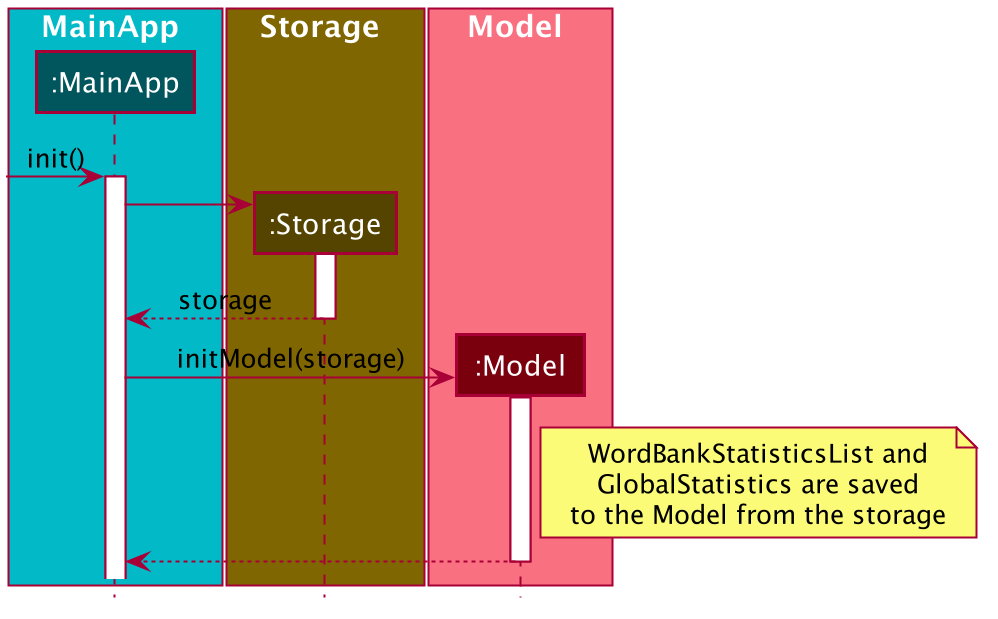
2. User selects a word bank
When the user selects a word bank, the selected WordBankStatistics from the WordBankStatisticsList is loaded
into Model.
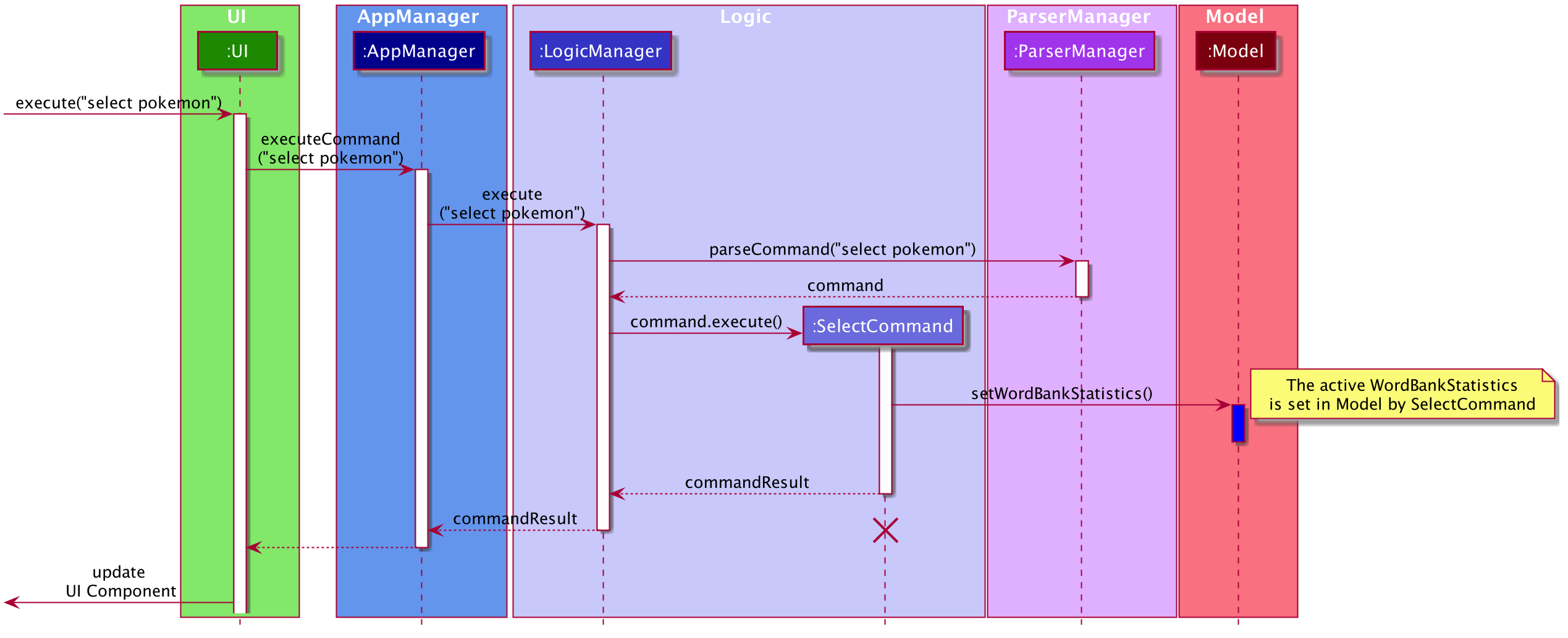
It is necessary to set the active WordBankStatistics in the Model such that when the user opens the WordBank, the
WordBankStatistics can be found in Model and shown in the UI.
3. User opens the selected word bank
In open mode, the user is shown the WordBankStatistics of the opened word bank, which is set in Model at step 2.
4. User plays the game
A GameStatisticsBuilder is used to record user actions during the game.
When the user starts the game by calling a StartCommand, the GameStatisticsBuilder is initialized.
Additionally, the GameStatisticsBuilder is updated with every GuessCommand or SkipCommand made during the game.
It receives the timestamp from the GameTimer which also resides in AppManager.
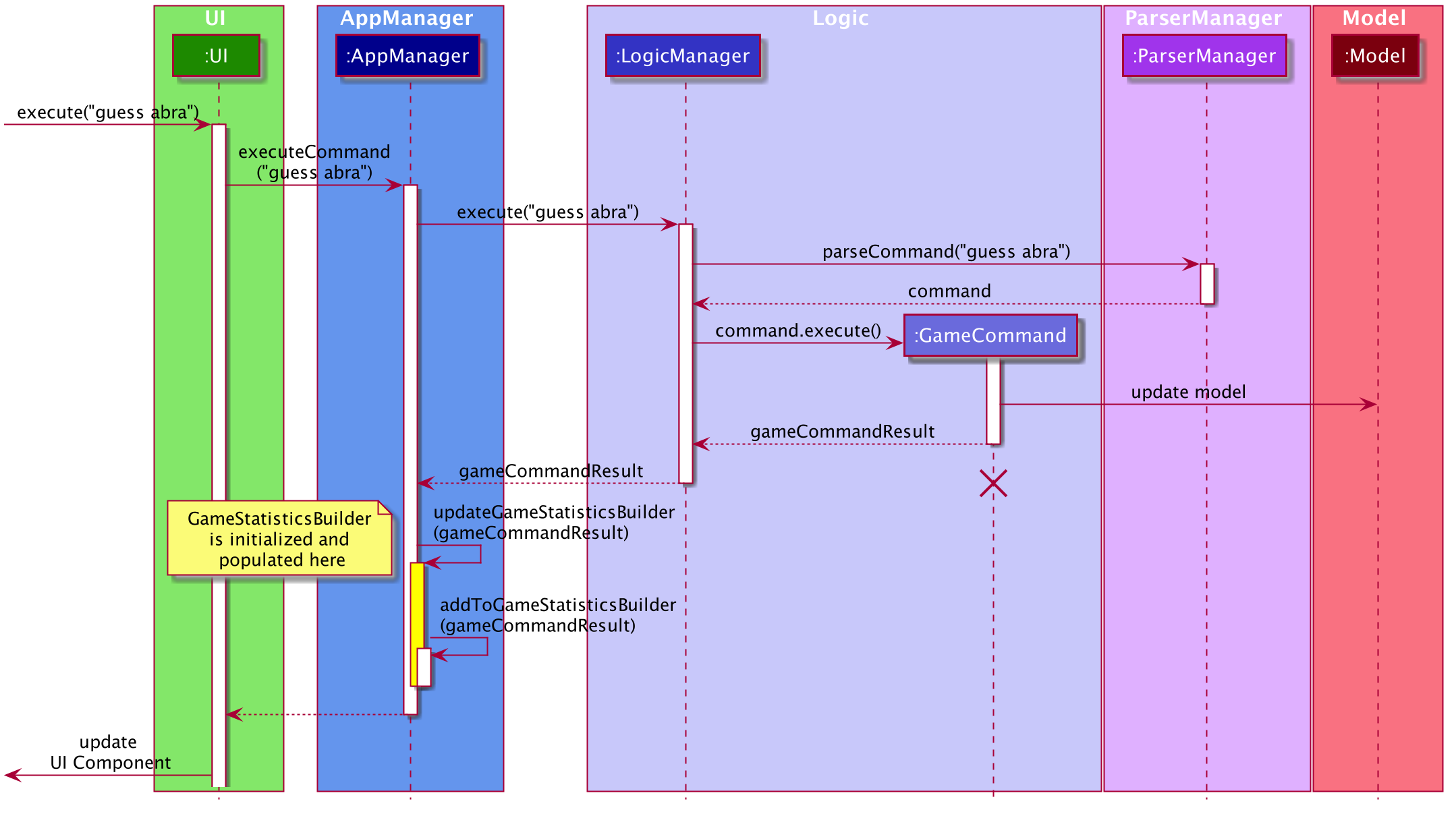
5. User finishes the game
When the user finishes the game, a GameStatistics is created from the GameStatisticsBuilder. The GameStatistics
is shown to the user in the game result page.
The GameStatistics is used to update its corresponding WordBankStatistics, which is then saved to disk.
Additionally, the GlobalStatistics is also updated and saved to disk.
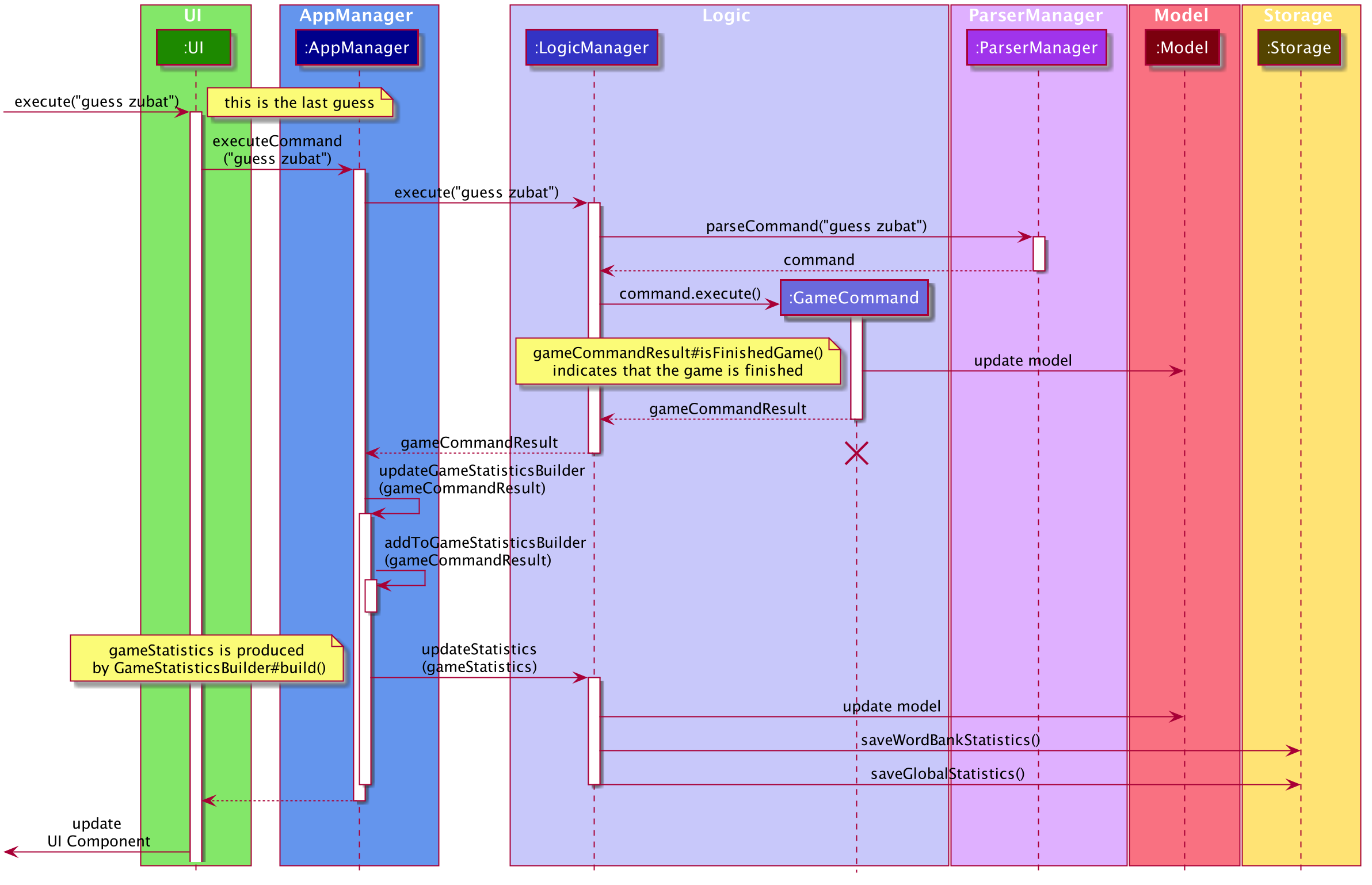
The work done in step 4 and 5 is executed in AppManager and the checks to decide what to do are done in
the same method updateGameStatisticsBuilder(CommandResult).
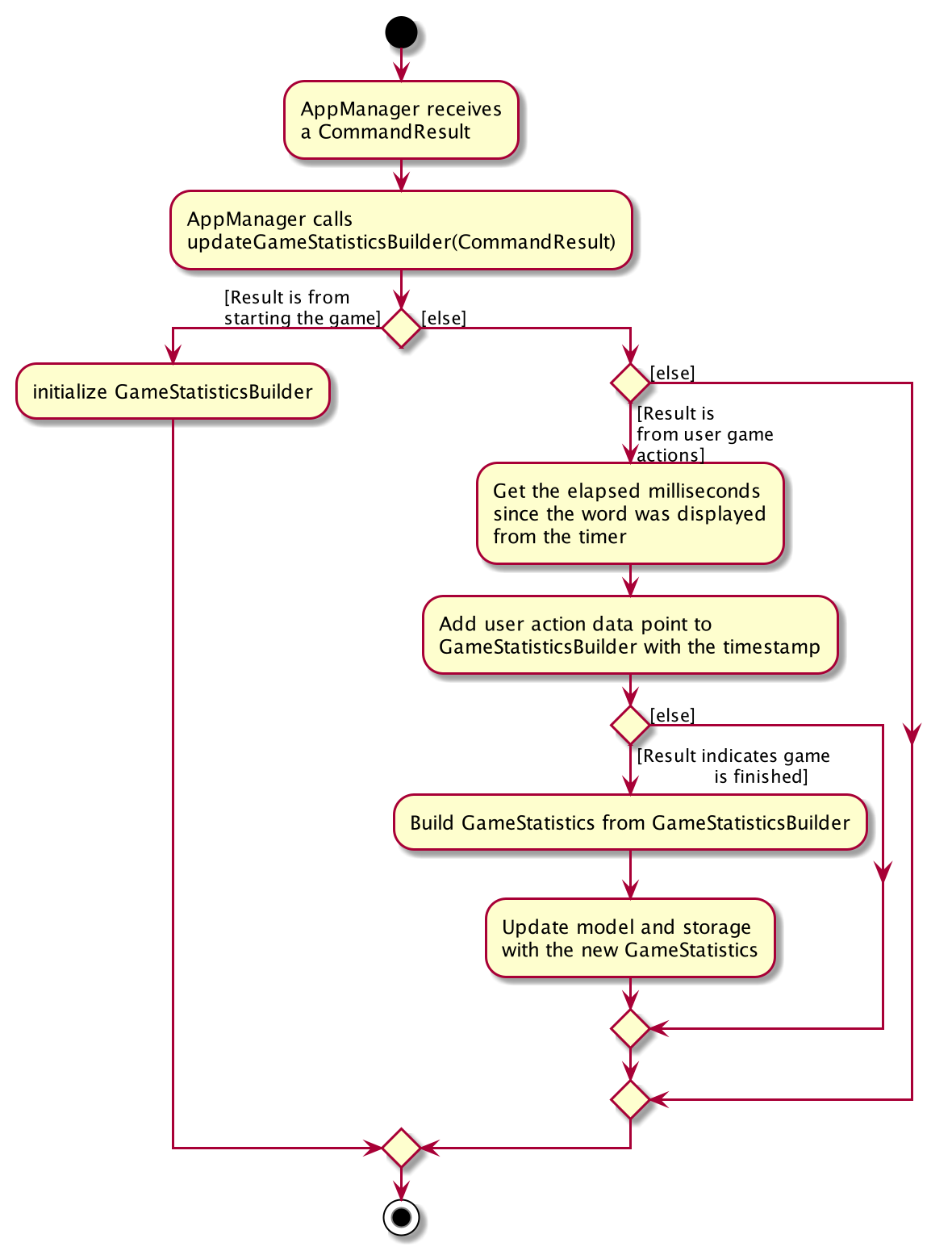
AppManager receives a CommandResult (Details unrelated to statistics are omitted).Design Considerations
There were some design considerations on implementing the statistics.
Alternative 1 |
Alternative 2 |
|
Aspect 1: |
Store in a separate file from the Example: Pros: Cons: |
Store Pros: Cons: |
Why we decided to choose Alternative 1: |
||